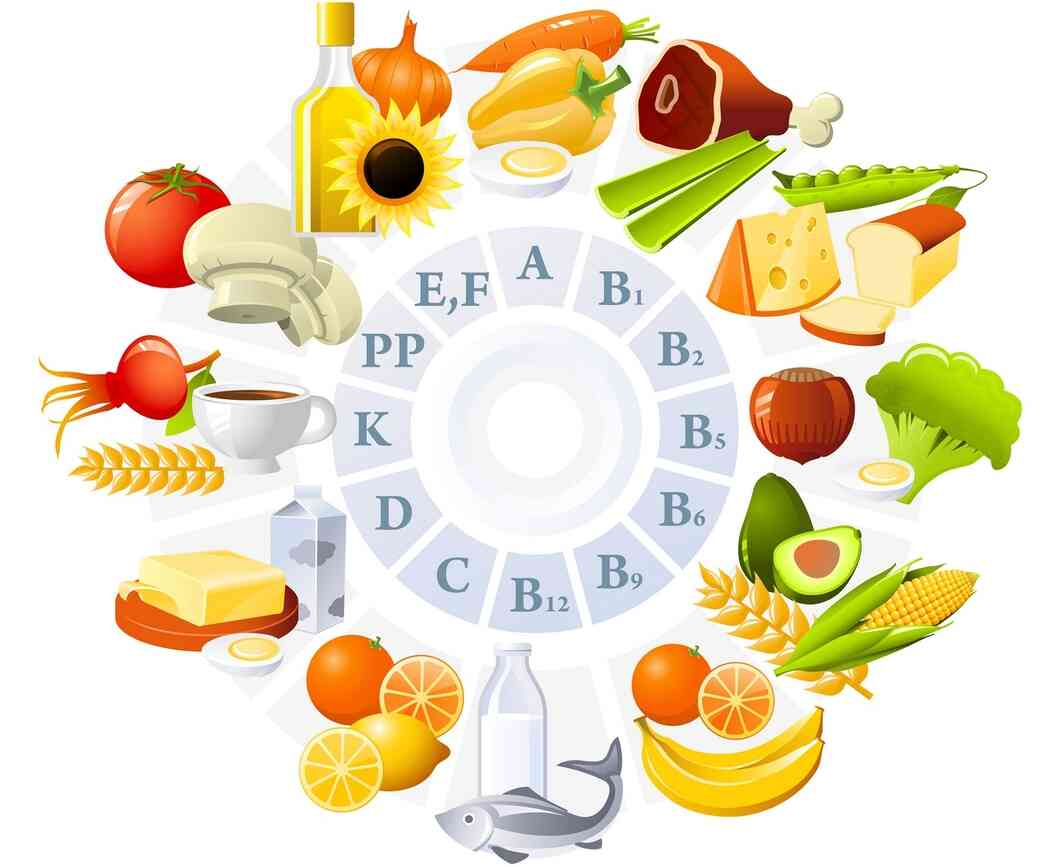
KNOW YOUR VITAMINS
Share

VITAMIN A
FUNCTION:
- Promotes tissue formation.
- Increases blood platelets.
- Promotes growth and feeling of well-being.
- Promotes appetite and digestion, especially in children.
- Essential to the health and integrity of epithelial tissue and its resistance to infection, notably of eyes, tonsils, sinuses, air passages, lungs,and gastrointestinal tract.
MOST RELIABLE SOURCES:
Whole milk, butter, cheese, egg yolk, cod liver oil, thin green leafy vegetables, yellow corn, yellow sweet potatoes, carrots, spinach, green beans, peas, bananas and fish oils.
VITAMIN B
All cooked foods are deficient in this nerve- and brain-nourishing element depending on the degree of heat and the time the food is exposed to the heat.
FUNCTION:
- Increases appetite.
- Promotes digestion.
- Promotes growth by stimulating metabolic processes.
- Protects body from certain nerve and brain diseases.
- Increases quantity and improves quality of milk during lactation. Mothers who do not have enough milk usually lack vitamin B.
- Stimulates pancreatic secretions, including insulin.
- Necessary to maintenance of thyroid and adrenal glands.
- Necessary to normal function of anterior pituitary.
MOST RELIABLE SOURCES:
Whole grain cereals,peas, beans, raw fruits, buttermilk, corn, cabbage, spinach, egg yolk, honey, and yeast, specifically dried yeast, & brewer's yeast.
VITAMIN C
FUNCTION:
- Essential to the health and integrity of endothelial tissues.
- Cooperates with B in nutrition of thyroid renal system.
- Is essential to oxygen metabolism.
- Cooperates with D in regulation of calcium metabolism.
- Promotes leukocyte and phagocytic activity.
MOST RELIABLE SOURCES:
Green peppers, oranges, lemons, tomatoes (raw or canned; without the addition of soda) bananas and other raw fruits, sprouted grains, green leafy vegetables, potatoes, unpasteurized milk, liver, and raw cabbage.
Vitamin C is not stored in the body. A fresh supply must be had every day.
VITAMIN D
FUNCTION:
- Controls calcium equilibrium and regulates mineral metabolism.
MOST RELIABLE SOURCES:
Cod liver oil and other fish oils, egg yolk, whole milk, and spinach. Exposure of naked skin to sunshine or ultraviolet light. Few foods contain vitamin D. Nature expects the animal to get this vitamin from the sunshine by the short wavelength rays changing the ergosterol in the skin into vitamin D.
VITAMIN E
FUNCTION:
- Necessary to reproduction in both male and female.
- Probably concerned in the metabolism of calcium and magnesium by increasing their diffusibility in the tissue fluids and increasing the mineral nutrition to the nervous and muscular tissues.This action also prevents the formation of calcium deposits in blood vessel walls, tendency to arterial hypertension, and loss of mobility of eye lens.
MOST RELIABLE SOURCES:
Whole grain cereals (whole wheat, whole corn, etc.), milk, lettuce, watercress, and raw fruits.
VITAMIN F
(A Growth Factor of our Own Designation)
FUNCTION:
- Promotes growth.
- Concerned with calcium metabolism. Reduces serum calcium, cooperates with vitamin D if both are present, but aggravates rickets if the supply of D is deficient.
- Aids in anemic conditions of deficiency origin.
- Improve skin color and circulation.
MOST RELIABLE SOURCES:
Associated with E in some cereals - oats and rye in particular. Probably present in milk and cod liver oil and responsible for the greatly reduced toxicity of the vitamin D content of cod liver oil over the synthetic vitamin.
VITAMIN G
FUNCTION:
- Necessary to growth and development.
- Necessary to normal calcium metabolism and erythrocyte formation.
MOST RELIABLE SOURCES:
Cereal germ, brewer's yeast, eggs.
